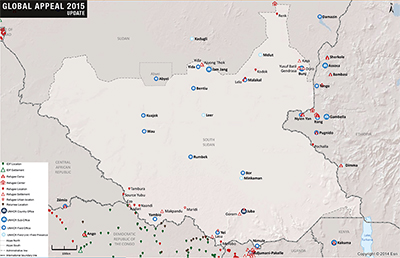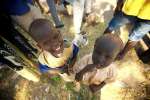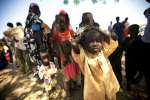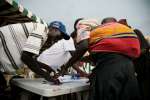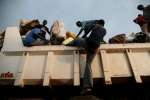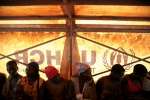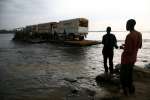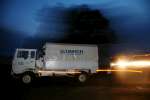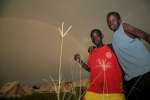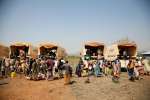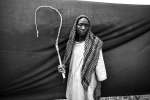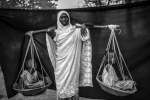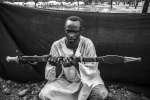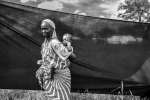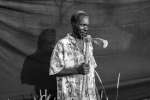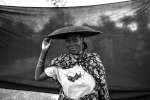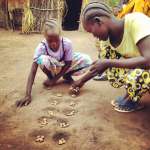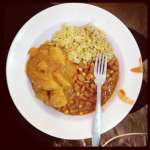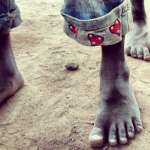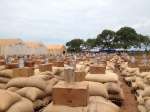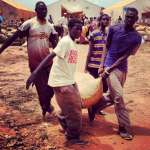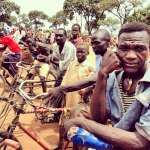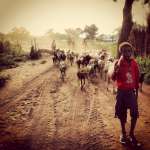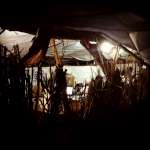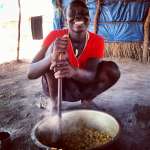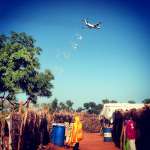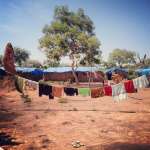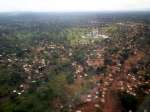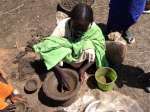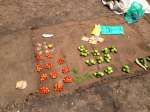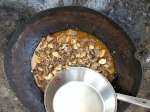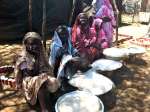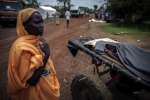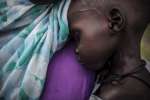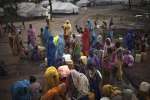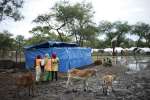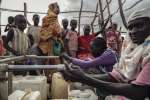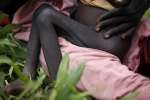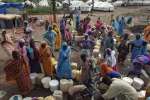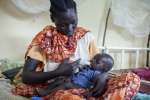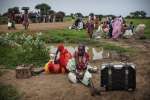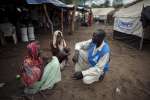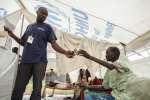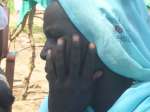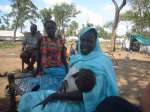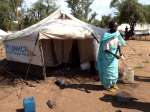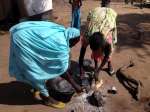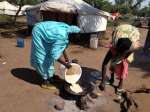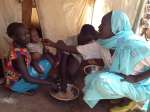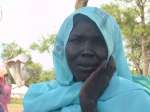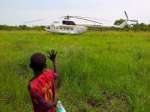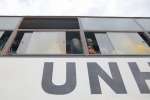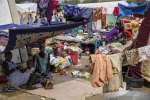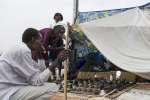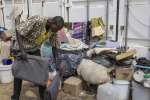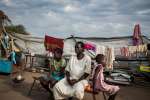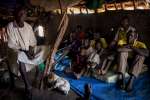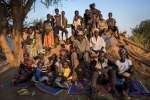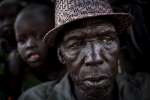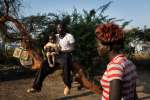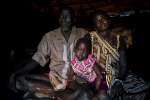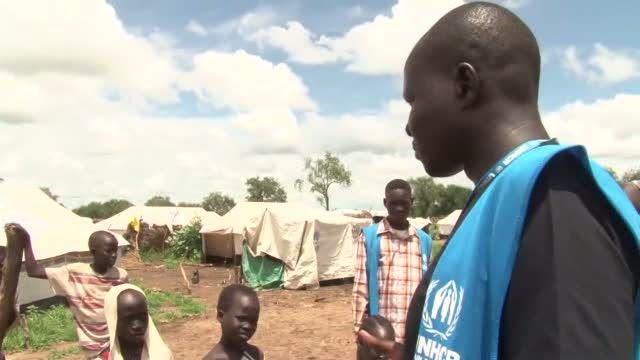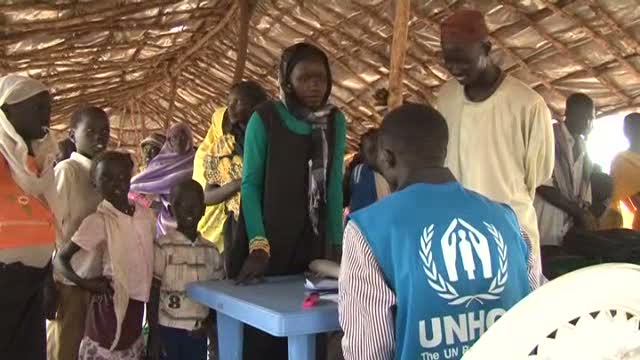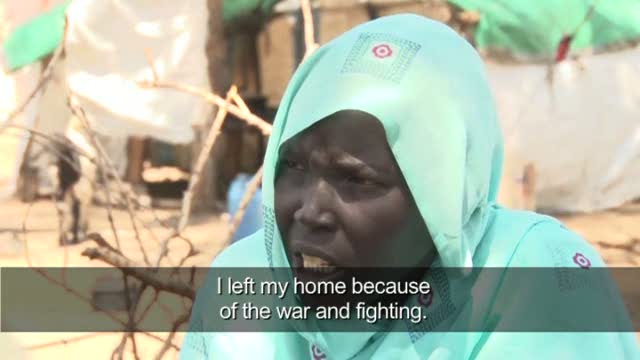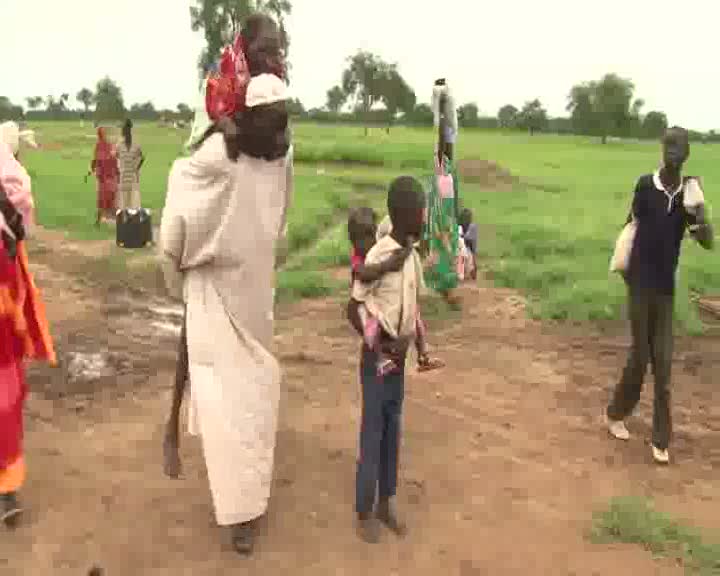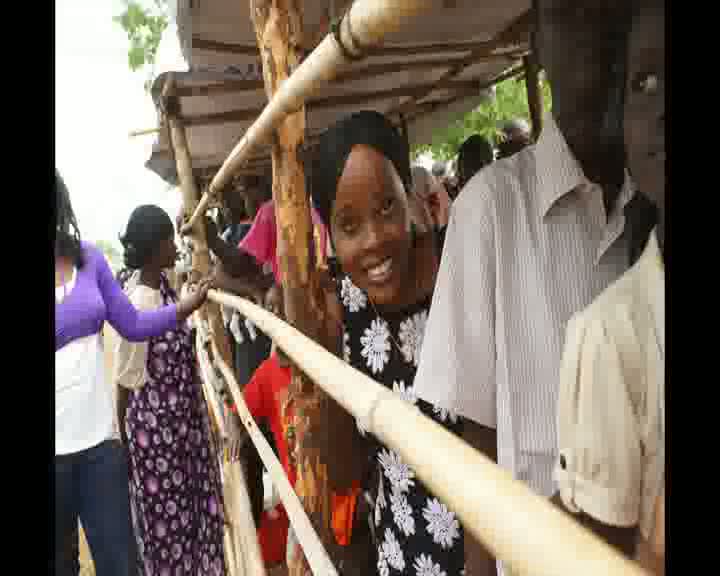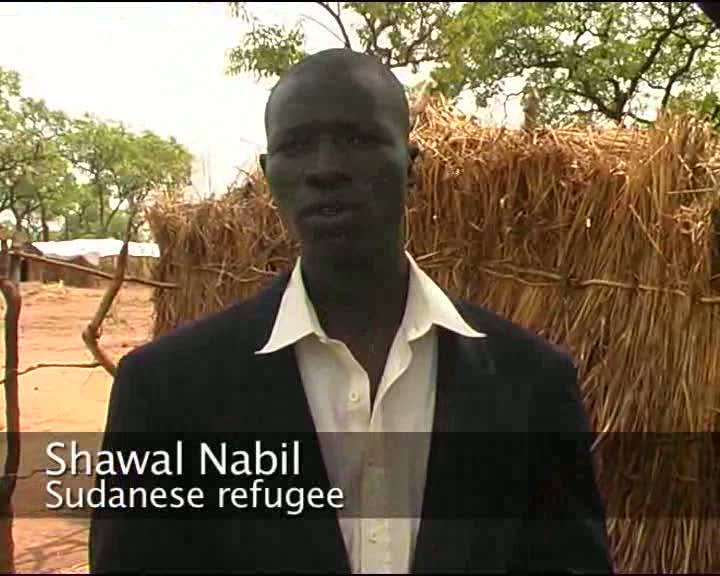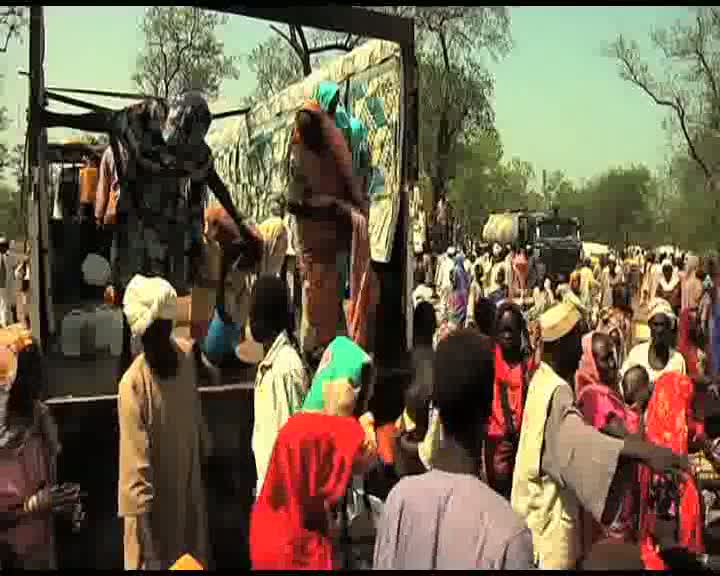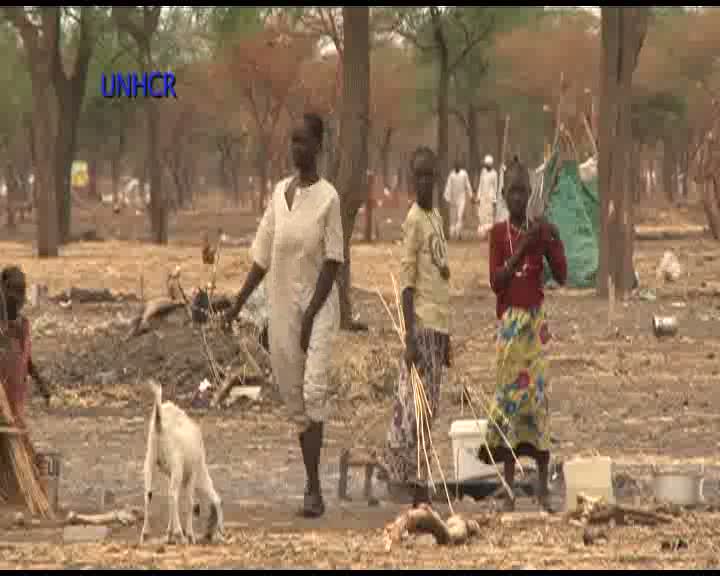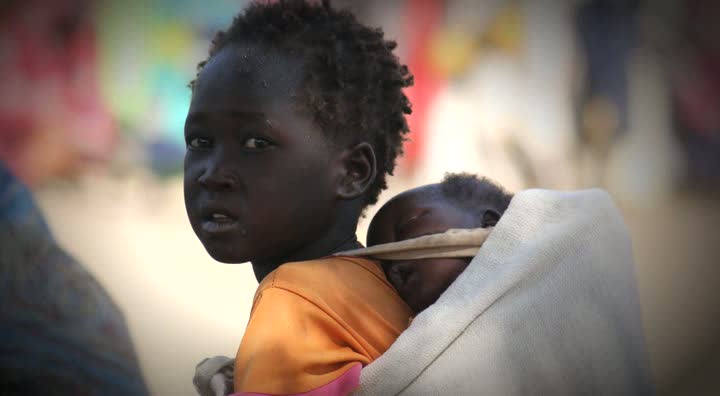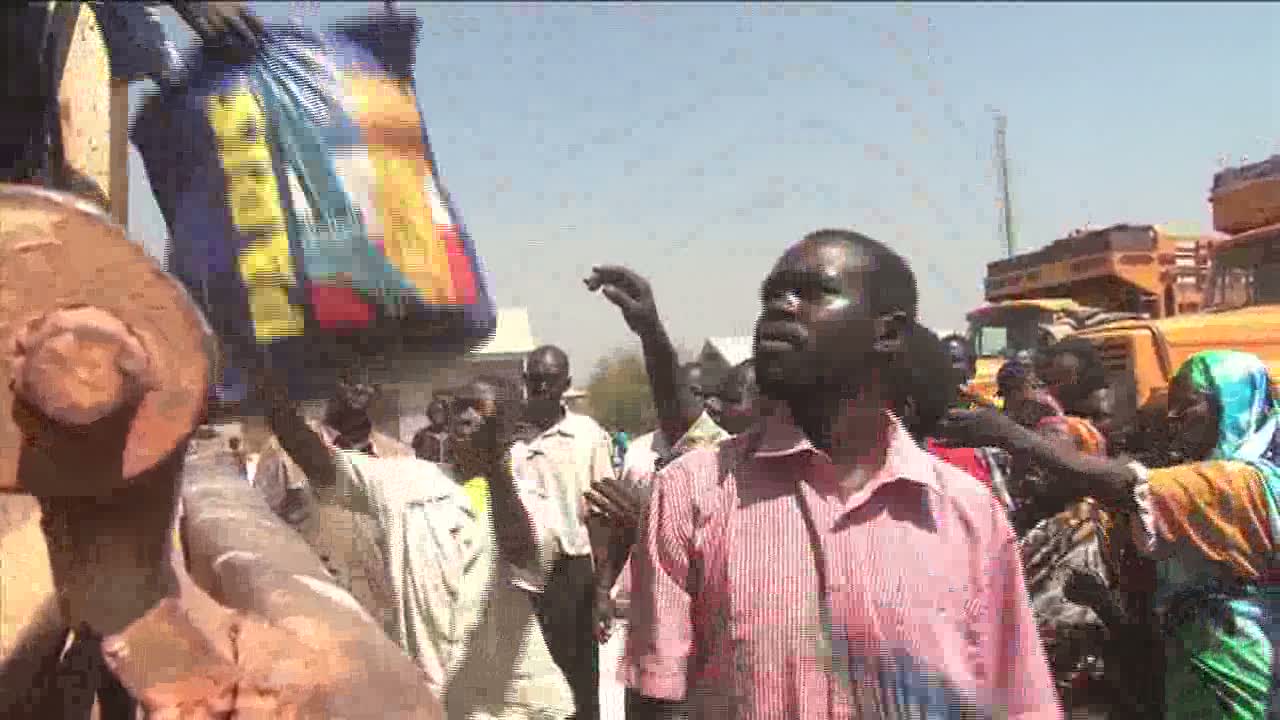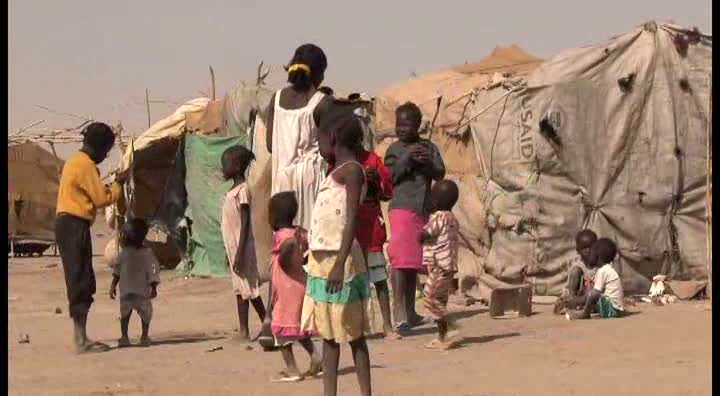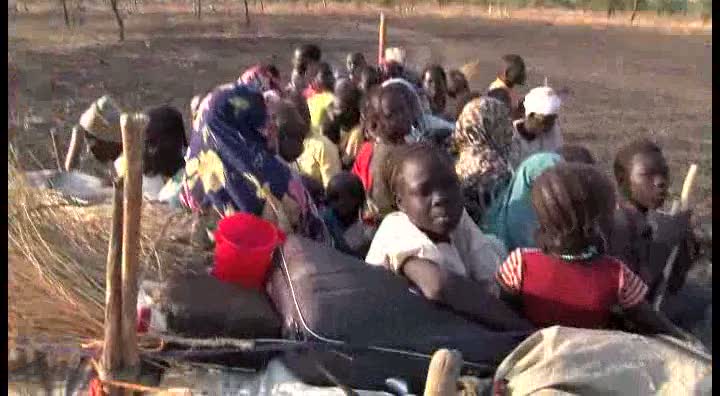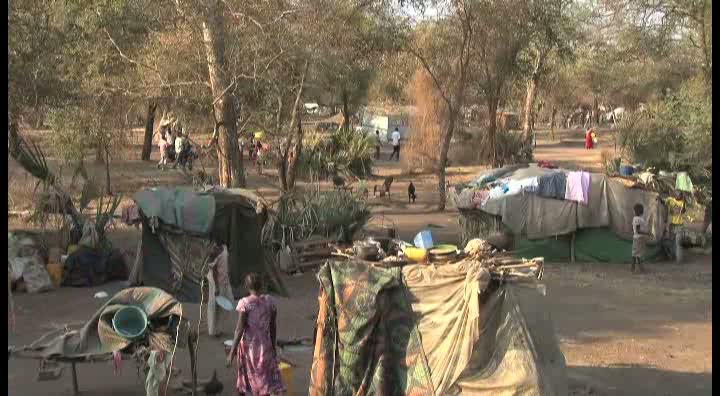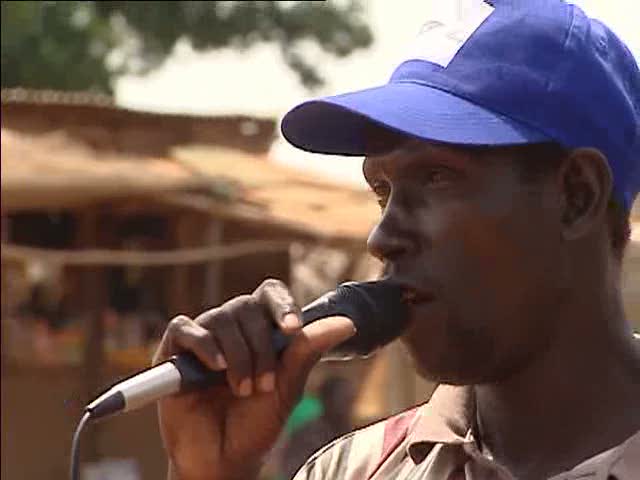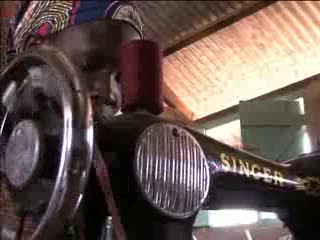Home > Where We Work > Africa > East and Horn of Africa > South Sudan
2015 UNHCR country operations profile - South Sudan
| Overview |
Working environment
-
Since the outbreak of the conflict in South Sudan in December 2013, continuing insecurity, and logistical constraints owing to heavy rains, have hampered the delivery of food and other essential items. Access to displaced people has been restricted, and refugees have faced serious protection concerns. At the same time, humanitarian workers have been at heightened risk. Six humanitarian workers were killed in a refugee-hosting area of Maban County in August 2014.
-
The multiplicity of armed elements throughout South Sudan greatly exacerbated the challenge of re-establishing the civilian character of refugee camps in the north and north-east of the country. This also affected the protection environment with the erosion of law and order in refugee settlements and camps, as well as in surrounding communities.
-
Competition over scarce resources has in some places caused tensions and fighting between refugees and host communities. Greater attention must be paid to the needs of host communities in order to foster peaceful coexistence. This is important in order to minimize the risk of secondary displacement of refugees and further instability in the border regions.
-
Insecurity and access constraints have required the use of air transport for goods and humanitarian personnel, driving up the costs of delivering assistance and services to refugees and the internally displaced people (IDPs). The crisis has also stymied plans to improve camp-based refugees' living conditions through the upgrading of emergency structures into more organized, sustainable constructions.
-
The South Sudanese civilian population at large is bearing the brunt of the conflict, with some 1.4 million people uprooted by the end of September 2014. The continuing violence could also precipitate famine in the country, where millions suffer from food insecurity and varying degrees of malnutrition as they cannot plant, grow and harvest crops due to their forced displacement.
People of concern
By mid-2014, South Sudan was hosting over 250,000 refugees from the Central African Republic (CAR), the Democratic Republic of the Congo (DRC), Ethiopia and Sudan. They include over 220,000 Sudanese refugees from the Blue Nile and South Kordofan regions who depend mainly on humanitarian aid for their survival.
The refugees from the CAR, the DRC and Ethiopia are living mainly in the relatively stable Central, Eastern and Western Equatoria states, and have not been exposed to the same violence and insecurity faced by the Sudanese refugees and the IDPs.
By mid-2014, there were also over 1.4 million South Sudanese internally displaced by the conflict that erupted in Juba in December 2013. The violence that spread to large parts of the country has mostly affected Jonglei state, as well as Unity and Upper Nile states where the majority of the displaced, as well as Sudanese refugees, are staying. Nearly 10 per cent of IDPs are found in the nine United Nations Mission in the Republic of South Sudan (UNMISS) Protection of Civilians sites and the overwhelming majority live in remote and often inaccessible locations.
| UNHCR 2015 planning figures for South Sudan* | |||||
|---|---|---|---|---|---|
| Type of population | Origin | January 2015 | December 2015 | ||
| Total in country | Of whom assisted by UNHCR |
Total in country | Of whom assisted by UNHCR |
||
| Total | 1,400,150 | 590,150 | 1,568,650 | 508,650 | |
| * UNHCR also continues to work to prevent statelessness as a result of the independence of South Sudan in 2011. The Office will assist people at risk of statelessness to confirm their identity and South Sudanese nationality through civil status documentation and/or information programmes. | |||||
| Refugees | Dem. Rep. of the Congo | 15,600 | 15,600 | 17,600 | 17,600 |
| Ethiopia | 6,500 | 6,500 | 7,000 | 7,000 | |
| Sudan | 245,500 | 245,500 | 266,300 | 266,300 | |
| Various | 2,200 | 2,200 | 2,700 | 2,700 | |
| Asylum-seekers | Various | 50 | 50 | 50 | 50 |
| Returnee arrivals during year (ex-refugees) | South Sudan | 300 | 300 | 25,000 | 25,000 |
| Internally displaced | South Sudan | 1,000,000 | 300,000 | 1,000,000 | 110,000 |
| People in IDP-like situations | South Sudan | 110,000 | 10,000 | 110,000 | 10,000 |
| Returnee arrivals during year (ex-IDPs) | South Sudan | 20,000 | 10,000 | 140,000 | 70,000 |
| Response |
Needs and strategies
UNHCR will continue to encourage the Government of South Sudan to sign and ratify relevant international conventions and treaties related to the protection of refugees and the prevention of statelessness. The Office enjoys the support of the Commission of Refugee Affairs, which has established an active field presence in Unity and Upper Nile states hosting Sudanese refugees.
In 2015, UNHCR's main focus in South Sudan will be to respond to the needs of Sudanese refugees in the camps. The overarching priority will be to upgrade emergency structures in all camps and enhance the shelter, health, education, water, sanitation and hygiene sectors to improve the current standards. Protection priorities will include: maintaining the civilian character of refugee settlements; improving access to and the quality of education, as a means of preventing child recruitment and child labour; enhancing the monitoring of sexual and gender-based violence (SGBV) and referral of cases; harmonizing access to assistance for individuals with specific needs; promoting peaceful coexistence among refugees and host communities; and strengthening the Government's capacity to respond to the protection needs of refugees.
Basic services, self-reliance and identification of durable solutions will be pursued for non-Sudanese refugees remaining in camps/settlements. Protection and basic services will be continued for urban refugees, and the Office will also promote the distribution of identity cards. UNHCR will continue facilitating voluntary repatriation of refugees whenever possible. In addition, community-based activities will be implemented for refugee/IDP returnees to support their smooth and sustainable reintegration process.
The Office will support the Government in processing applications for nationality and identity documentation to prevent statelessness.
With regard to IDPs, UNHCR, as a part of the Humanitarian Country Team in South Sudan, will lead or actively engage in the response efforts in the area of protection, camp coordination and camp management (CCCM) and shelter/non-food items (NFIs), targeting the most vulnerable IDPs including those displaced outside the Protection of Civilians sites.
| Implementation |
Coordination
UNHCR will maintain its strategic and operational partnerships to deliver protection and assistance to refugees, returnees and IDPs in the country.
Regarding IDPs, UNHCR will continue to lead the protection cluster with NRC and to co-lead the CCCM cluster, together with IOM and ACTED, as well as to support the IOM-led shelter/NFI cluster. Furthermore, the Office will continue to undertake assessments, protection monitoring, registration of unaccompanied and separated children and advocacy together with other protection actors, the Government, OCHA, diplomatic missions and UNMISS.
In responding to refugee situations, the Office also actively coordinates with different agencies,drawing on their technical expertise and on the provision of emergency supplies.
| 2015 UNHCR partners in South Sudan |
|---|
| Implementing partners |
| Government agencies: Commissioner for Refugee Affairs, Directorate of Nationality, South Sudan AIDS Commission |
| NGOs: Action Africa Help International, Africa Humanitarian Action, Agence d'aide à la coopération, Association of Christian Resource Organization Serving Sudan, UK, Care South Sudan, Danish Refugee Council, IBIS - Italy, Health Link - South Sudan, Human Development Council, International Medical Corps, International Rescue Committee, Lutheran World Federation, Nonviolent Peaceforce, Norwegian Refugee Council, Save the Children Fund, Samaritan's Purse - USA, World Vision International |
| Others: UNOPS, UNV |
| Operational partners |
| Government agencies: Ministry of the Interior and Wildlife Conservation |
| NGOs: Médecins Sans Frontières (France, Belgium, the Netherlands and Spain), CAFOD, Relief International, Medair, Mentor, Oxfam |
| Others: FAO, IOM, UNAIDS, UNOCHA, UN-Habitat, UNDP, UNFPA, UNICEF, UNMAS, UNMISS and WFP |
| Financial information |
The overall financial requirements for UNHCR's operation in South Sudan in 2013 were USD 220.10 million. In 2014, the comprehensive needs budget was set at USD 230.1 million; however supplementary requirements have already brought the 2014 revised budget to USD 424.3 million by June 2014.
In 2015, the financial requirements for the operation have been set at USD 342.6 million, reflecting the priority need to urgently provide basic life-saving assistance to the increasing number of internally displaced, as well as those of refugees hosted by the Government and people of South Sudan.
It is likely that there will be an appeal for supplementary requirements related to the South Sudan situation in 2015.
Source: UNHCR Global Appeal 2015 Update

